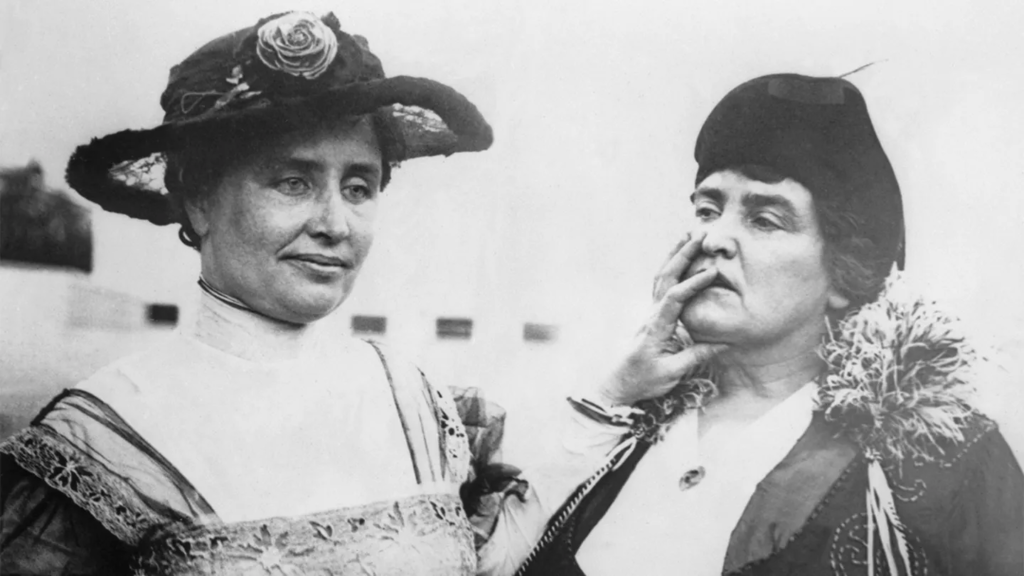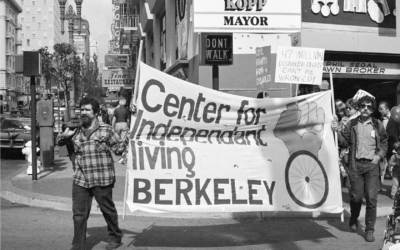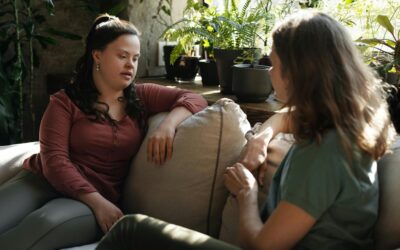Dual sensory loss, often referred to as deafblindness, is a unique condition that affects individuals who experience significant impairments in both vision and hearing. Living with dual sensory loss means facing a range of physical, emotional, and social obstacles. However, with the assistance of Support Service Providers (SSPs), deafblind individuals can overcome these challenges and lead fulfilling lives.
Dual sensory loss occurs from a range of causes and conditions. Some individuals are born with both hearing and visual impairments, while others may acquire these disabilities later in life due to genetic factors, illness, trauma, or age-related conditions. The impact of dual sensory loss is profound as it affects essential aspects of communication, mobility, access to information, and social interaction.
Deafblind individuals use various terms to describe themselves, rooted in their native language and cultural identity. The term “deafblind” is commonly used to refer to people with a combined loss of vision and hearing. However, other terms like “Deaf-Blind,” “DeafBlind,” or “DB” may also be used based on personal preferences and cultural affiliations.
Accurately determining the number of individuals with deafblindness is challenging due to varying definitions and assessment methods. Data suggests that just under 1% of people over 5 years old, or about 3 million people in the U.S., are deafblind, most being older adults.
Historically, deafblind individuals faced limited opportunities for community involvement and independence. They often relied on the support of family, friends, and professionals to navigate daily life. However, advancements in disability rights legislation and the disability movement have brought about positive changes, enabling deafblind individuals to pursue education, careers, and independent living.
The Individuals with Disabilities Education Act (IDEA) of 1975 (which we wrote about in this previous article) is a federal law that ensures access to free accessible public education for children with disabilities, including those who are deafblind. This opened up opportunities for people in the deafblind community that had not been available before. It requires schools to provide specialized services and accommodations to meet the unique needs of deafblind students, promoting their educational opportunities. This Act was followed by the Americans with Disabilities Act (ADA) in 1990. The ADA is a comprehensive civil rights law that prohibits discrimination against individuals with disabilities in various areas, such as employment, public accommodations, transportation, and telecommunications. It has played a significant role in promoting accessibility and inclusion for deafblind people by ensuring reasonable accommodations and removing barriers to participation.

Image description: Tactile communication. Three hands are pictured up close. They are touching side-by-side. The two hands on the left are in a fist, and the one on the right is in a fist with the index finger extended.
Even with proactive legislation and greater access to services and community life today, living with dual sensory loss presents unique challenges that can significantly impact an individual’s daily life. Communication becomes a complex task as conventional methods such as spoken language or visual cues may not be effective. Deafblind individuals often rely on tactile communication, such as sign language tactile interpretation or haptic communication, which involves touch-based interactions such as handshakes, hugs, pats on the back, holding hands, and other forms of physical touch used to convey greetings, affection, support, or reassurance. Adjusting to environmental changes, navigating unfamiliar places, and accessing information independently become challenging tasks that require assistance.
Support Service Providers

Helen Keller with her teacher Anne Sullivan in 1915
Support Service Providers (SSPs) are specially trained individuals who play a crucial role in enabling people who are deaf-blind to access their environments, make informed decisions, and enhance communication. One of the most famous historical Support Service Providers is Anne Sullivan, Helen Keller’s teacher. While the term Support Service Provider did not exist in Sullivan’s time, she functioned in that role as a teacher, friend, interpreter, and guide to Helen Keller (who was deafblind) for most of Keller’s life. Today, this role is often held by family members or spouses, with modern SSPs maintaining more of a not-too-personal, and not overly influential, supportive working relationship with people who are deafblind.
Most SSPs today recognize the need to keep a professional distance to maintain objectivity in the information provided to their clients. A foundational aspect of the SSP philosophy is respect for the individual’s leadership and choices. The SSP does not try to influence decisions or make recommendations for the deafblind person. This way the deafblind individual has more agency and independence in the relationship.
The modern-day concept of SSPs emerged at a series of conferences in the 1980s through the efforts of the American Association of the Deaf-Blind (AADB), a national consumer organization comprising deaf-blind individuals from across the country. To participate in national conferences, deaf-blind individuals relied on volunteers who provided interpretation, visual and environmental information, and human guide services. AADB, in collaboration with its members, developed the concept and defined the roles and responsibilities of SSPs. This paved the way for the establishment of SSP programs in local communities.

Ryan Ollis, Deafblind Coordinator for the Wavefront Center for Communication Accessibility & Rachel Kavanagh, DeafBlind Intervenor sit across from each other in an office and communicate using tactile ASL. Ryan wears a grey hat and grey shirt, while Rachel wears a black shirt; they are both smiling. In the background to the left, a CCTV shows magnified text, and the head of a guide dog is seen near Ryan’s knee. Photo credit: Wavefront Center for Communication Accessibility
Support Service Providers play a crucial role in empowering deafblind individuals to overcome barriers and engage fully in society. They act as a bridge between deafblind individuals and the world around them, facilitating communication, access to information, and promoting independent living. SSPs assist with daily activities such as grocery shopping, navigating the community, making phone calls, and participating in social events. Their support empowers deafblind individuals to live more independently, enhancing their self-confidence and self-sufficiency.
The Role of SSPs:
- Communication Support: SSPs facilitate effective communication between deafblind individuals and the people they interact with. They employ various communication methods, including tactile signing, finger spelling, and the use of tactile aids and technology to bridge the communication gap.
- Mobility Assistance: SSPs assist with orientation and mobility, guiding deafblind individuals in navigating their surroundings safely. They may provide sighted guide techniques, assist with public transportation, and support individuals during outdoor activities.
- Access to Information: SSPs play a crucial role in providing access to information by describing visual elements, or using alternative formats like Braille or tactile graphics. They help deafblind individuals access educational materials, written information, and digital content.
- Emotional Support: Deafblindness can be isolating, and SSPs offer valuable emotional support by providing companionship, active listening, and understanding. They create a supportive environment that allows individuals to express their feelings, concerns, and aspirations.
Living with dual sensory loss presents unique challenges, but with the support of SSPs, deafblind individuals can lead meaningful and fulfilling lives. By understanding the deafblind experience and recognizing the critical role of SSPs, we can foster a more inclusive and accessible society. Continued efforts in research, awareness, accessibility, and support services are essential to ensure that deafblind individuals receive the assistance they need to thrive and participate fully in the world around them.
For more information and resources, here are Colorado-based deafblind resources, and here is the Colorado Department of Human Services SSP Guidelines.





